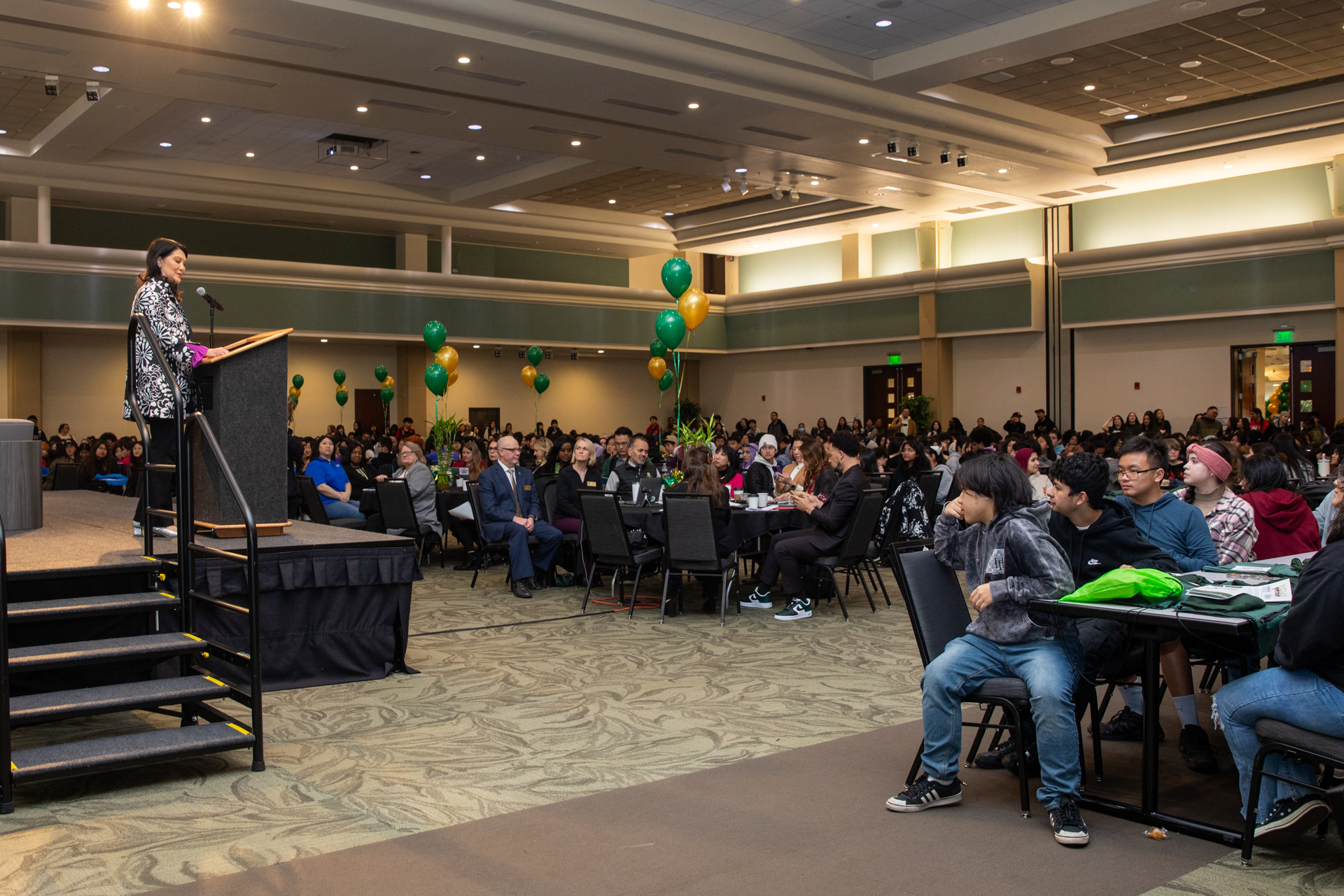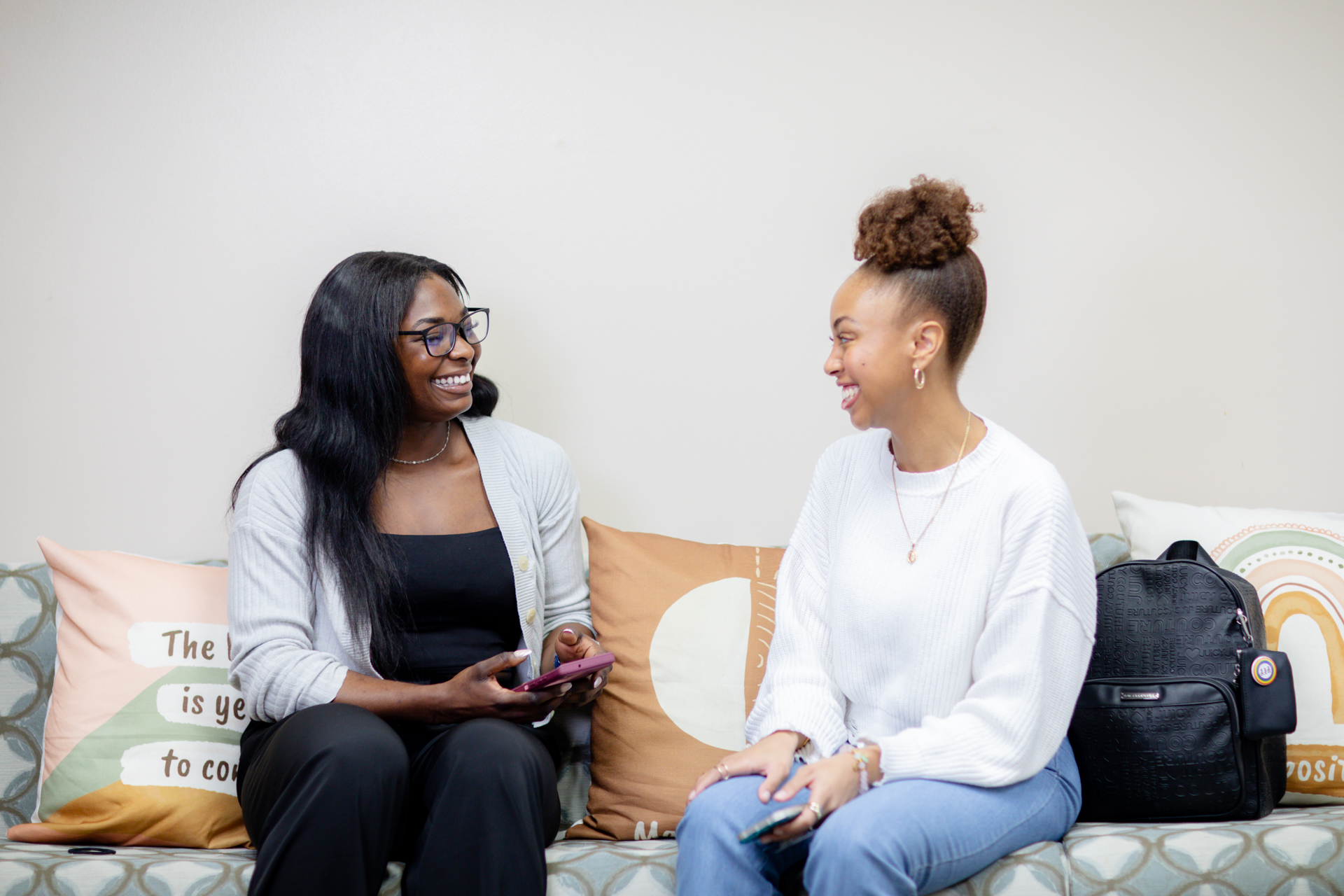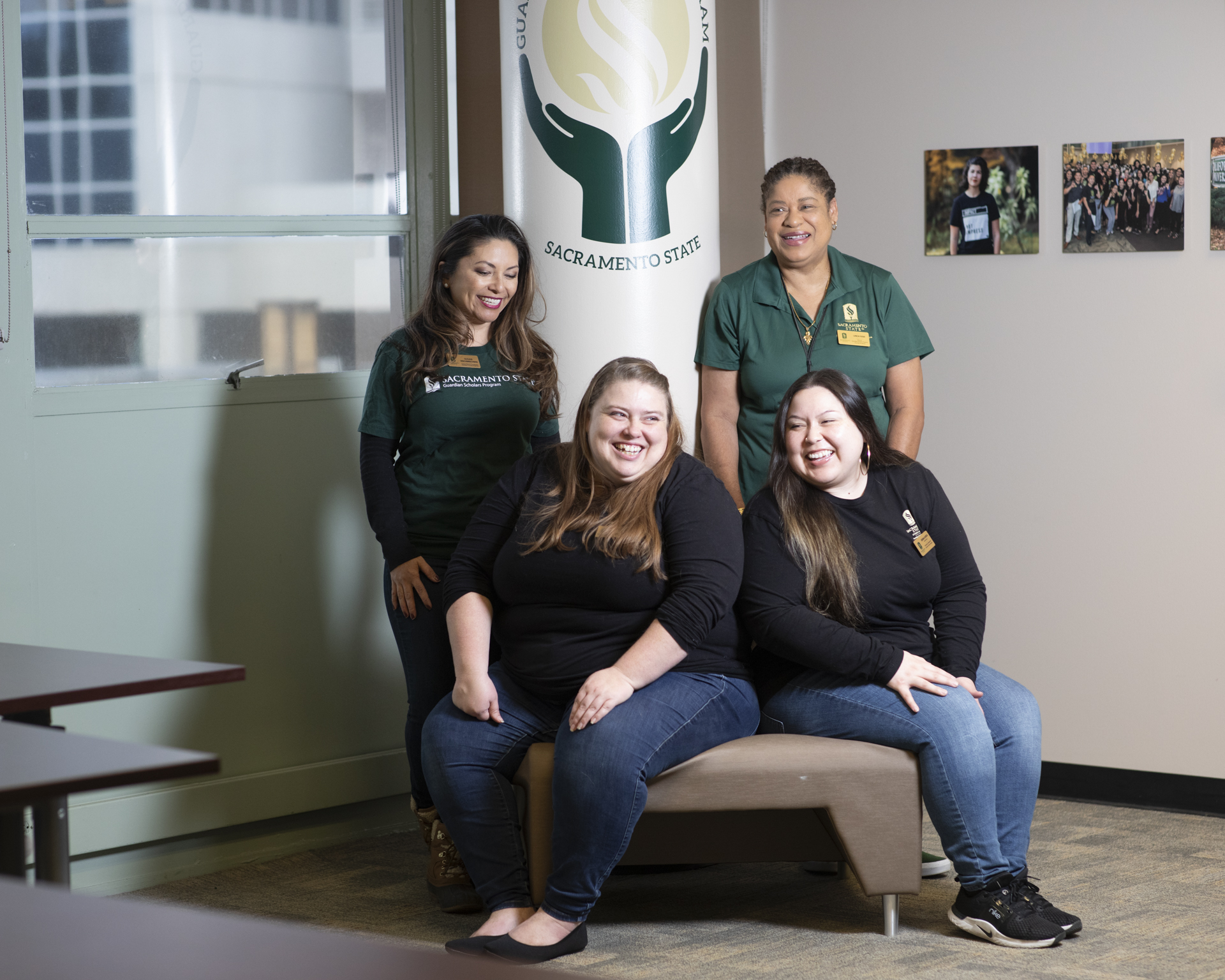Story Content
Sac State unveils Esak’tima’ Center to support Native students
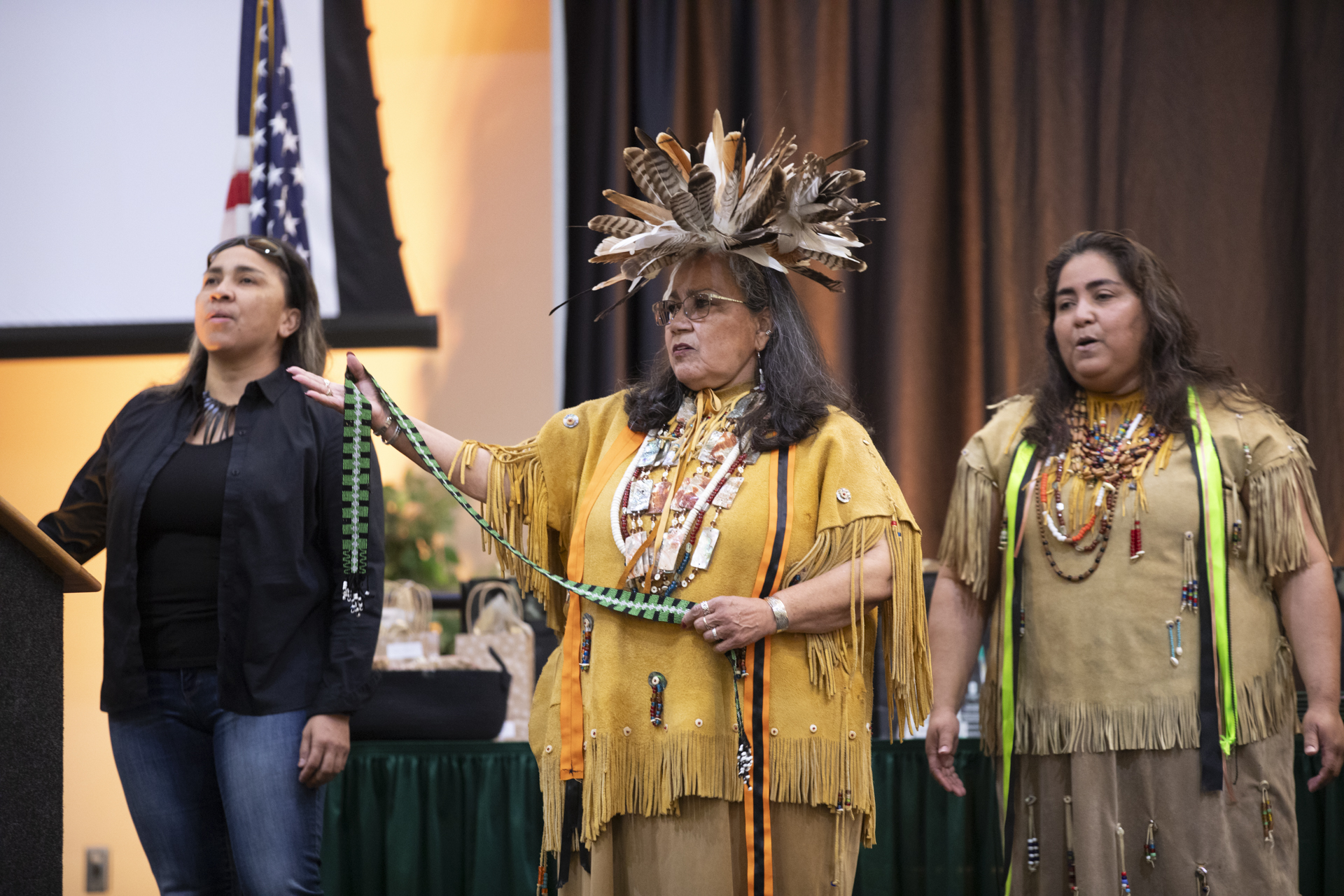
March 08, 2024
Sacramento State’s campus rests on the homelands of Native people, including members of the Miwok, Maidu and Nisenan tribes.
Now, the University’s Native students have a special place to gather and learn: the Esak’timá Center, which celebrated its grand opening on Friday, March 8.
“Today, Sac State takes another step toward fulfilling our mission of being a fully inclusive campus,” President Luke Wood told those gathered for the celebration.
The new center, which is open to students of all ethnic backgrounds, marks a significant milestone for the University, which offers a minor in Native American Studies and has a Native Scholars program.
The cultural center’s name, pronounced “eh-sack-tee-ma,” means in the Nisenan language “a place where knowledge comes.” It reflects the center’s goal to create “a sense of belonging for our Native students,” said Native Success Coordinator Rena Horse.
The center offers academic advising, workshops, peer counseling, leadership opportunities and much more to students who long have been left behind in the educational system, Horse said.
More than 200 of Sac State students identify as American Indian, a demographic that has faced significant challenges entering and graduating from college.
Nationally, less than 1% of college students are American Indian or Alaskan Native, census data shows, and only around 15% of Native Americans had earned a college degree as of 2021. In addition, Western education systems often lack an understanding of Native American culture, and many schools that serve students on reservations lack proper resources, according to the American Indian Education Fund.
Native students that do enter college tend to feel isolated and alone, said Horse, who graduated from Sac State with a degree in Ethnic Studies.
“I certainly didn’t feel like I belonged,” she said. “I didn’t receive a lot of help and support. Now at the Esak’timá Center, we will be here to provide students with all of the things they need to succeed,” from help with processing financial aid applications to academic advising.
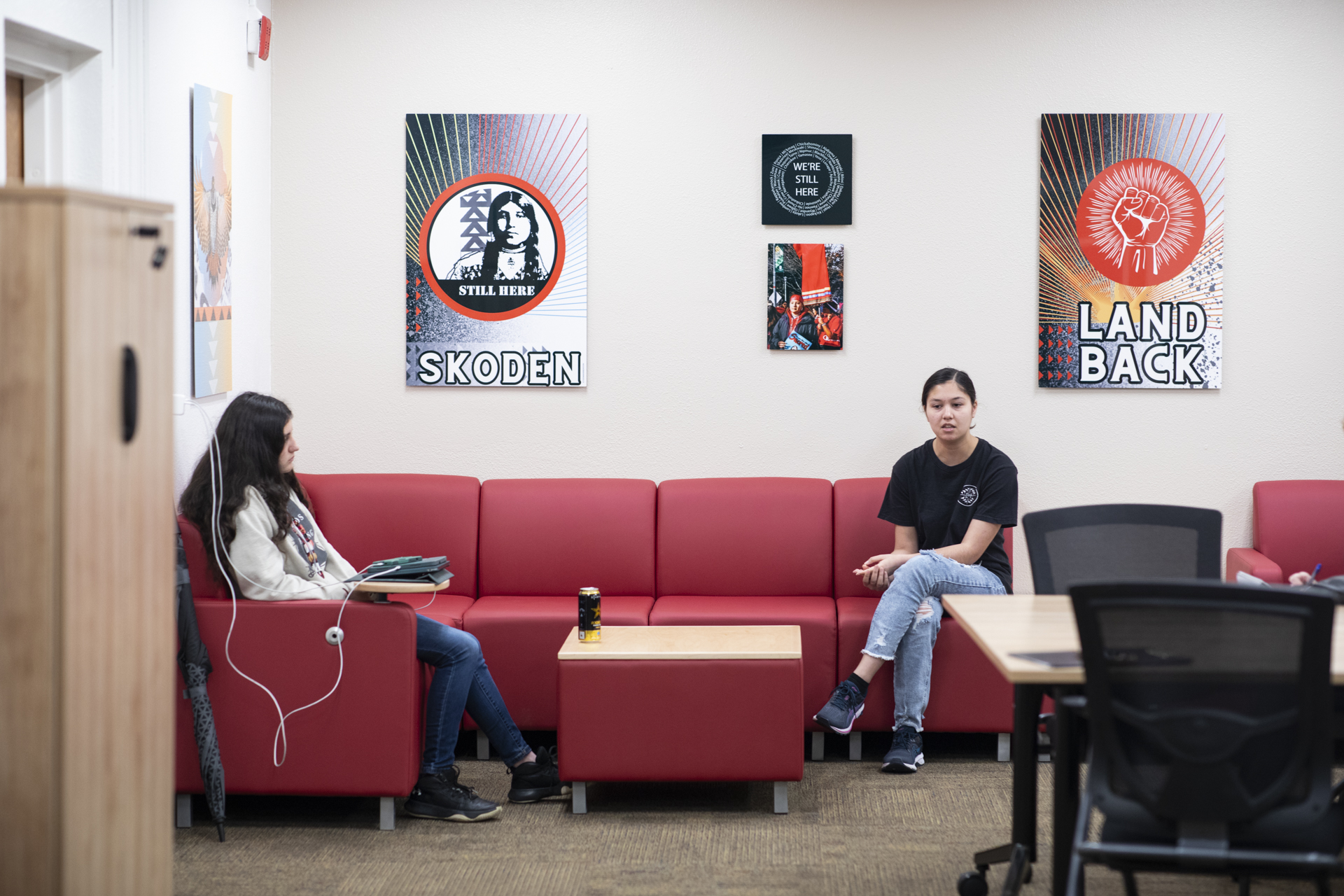
Located inside Lassen Hall, the center includes study and meeting rooms, a common area for casual gatherings and workshops, and office space. It also features a large piece of artwork by Nisenan artist Tiffany Adams, as well as art donated by Native tribal leaders and Sac State faculty.
“We want students to feel welcomed, seen and heard,” said Chao Vang, assistant vice president for Educational Equity Programs and Student Success.
The grand opening celebration featured tours of the center, speeches, traditional dancing and music, and blessings by Native American elders. Speakers included Wenda Fong, chair of the CSU Board of Trustees; James Ramos, the first California Native American to serve in the California State Assembly; and tribal leaders from across the region.
The Esak’timá Center “will help us unleash our voices,” said Ramos, a lifelong resident of the San Manuel Indian Reservation in San Bernardino County. “It’s time that our voices be heard” in the educational system and beyond, he added.
For Native students at Sac State, the center will offer a place to decompress, share their experiences, and maintain their cultural ties.
Political Science major Lillian Weese said that, as a Native student, she felt lonely and homesick during her first semester on campus.
“Native Americans are the smallest ethnic group here, so it can be hard to make connections,” Weese said.
“I want people to feel safe here,” said Mickey Nelson, a Native student who is studying Kinesiology. “I hope students take advantage of everything the center has to offer.”
Those aspirations were echoed by the speakers at Friday’s gathering, including Wilton Rancheria Elder Mary Tarango, who told attendees that she hopes the new center will help students “remember who you are, and where you come from.”
“It makes my heart feel so good to see this happening,” she said.
Editor's Pick
Media Resources
Faculty/Staff Resources
Looking for a Faculty Expert?
Contact University Communications
(916) 217-8366
communications@csus.edu
